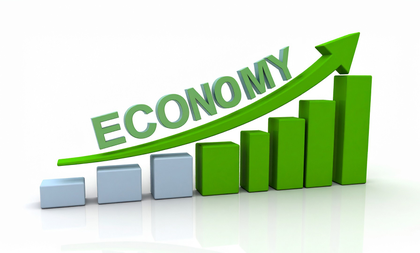World Bank raises India’s FY26 growth forecast, country to remain world’s fastest
By IANS | Updated: October 7, 2025 13:10 IST2025-10-07T13:07:02+5:302025-10-07T13:10:20+5:30
New Delhi, Oct 7 India is expected to remain the world’s fastest-growing major economy, underpinned by strong consumption ...

World Bank raises India’s FY26 growth forecast, country to remain world’s fastest
New Delhi, Oct 7 India is expected to remain the world’s fastest-growing major economy, underpinned by strong consumption growth, improved agricultural output and rural wage growth, according to a World Bank report released on Tuesday.
The World Bank raised India’s growth forecast to 6.5 per cent for FY26 from its earlier projection of 6.3 per cent in June, citing resilient domestic demand, strong rural recovery and the positive impact of tax reforms.
The report pegs the growth of Bangladesh at 4.8 per cent in FY26 while for Bhutan, the forecast for FY26 has been downgraded to 7.3 per cent due to hydropower construction delays but is expected to reverse as construction speed picks up in FY27.
In Maldives, growth is projected to slow to 3.9 per cent in FY26, while in Nepal, recent unrest and heightened political and economic uncertainty is expected to cause growth to decline to 2.1 per cent in FY26, the report observes.
In Sri Lanka, the forecast has been upgraded to 3.5 per cent in FY26, due to strong growth in tourism and service exports.
Growth in South Asia is projected to be robust at 6.6 per cent this year — but is expected to slow to 5.8 percent in 2026, a downward revision of 0.6 percentage points from the April forecast. Downside risks include spillovers from the global economic slowdown and uncertainty around trade policy, sociopolitical unrest in the region, and labour market disruptions posed by emerging technology such as artificial intelligence (AI).
“South Asia has enormous economic potential and is still the fastest growing region in the world. But countries need to proactively address risks to growth,” said Johannes Zutt, World Bank Vice President for South Asia. “Countries can boost productivity, spur private investment, and create jobs for the region’s rapidly expanding workforce by maximizing the benefits of AI and lowering trade barriers, especially for intermediate goods.”
The report recommends harnessing the potential of AI to boost productivity and incomes. The rapid development of AI is transforming the global economy and reshaping labor markets. South Asia’s workforce has limited exposure to AI adoption due to the predominance of low-skill, agricultural and manual jobs. But moderately educated, young workers, especially in sectors such as business services and information technology, are vulnerable. Since the release of ChatGPT, job listings have fallen by around 20 percent in jobs most exposed to, and most replaceable by AI relative to other occupations.
But AI could also bring substantial productivity gains, especially in sectors that have strong potential for AI to complement humans. Job listings data in the region indicate rapidly growing demand for AI skills, with such jobs commanding a wage premium of nearly 30 percent relative to other professional roles.
The report’s recommendations include steps to help accelerate job creation by streamlining size-dependent regulations that discourage firms’ growth, better transport and digital connectivity, more transparent housing search options, upskilling and job matching, as well as providing safety nets for affected workers.
Disclaimer: This post has been auto-published from an agency feed without any modifications to the text and has not been reviewed by an editor
Open in app